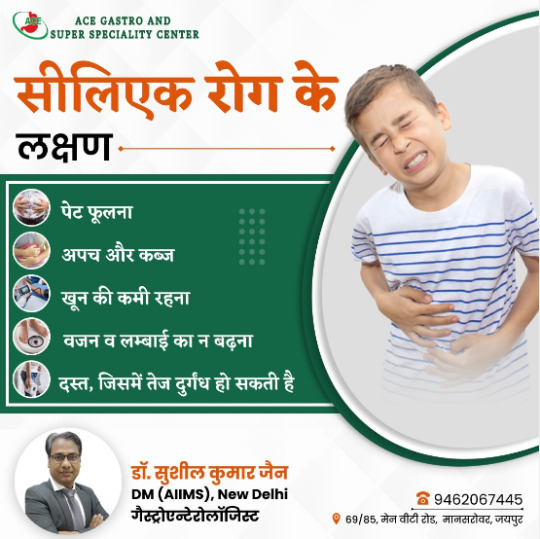#FoodAllergy
Text
What to expect from allergy testing: Before, during, and after

"What to expect from allergy testing: Before, during, and after" Disclaimer: None of the information provided in these posts should be taken as medical advice. Please consult with your doctor before trying recommendations or if you have concern
Some posts may contain affiliate or third-party links.
When you and your immunologist determine allergy testing is necessary, here are some things you can expect. In all of them, they will record your detailed medical history, including family history, and may perform a physical examination to look for clues regarding your reactions.
Trigger warning: We’re going to be talking about needles very soon, so please proceed with that in mind. If you need to stop reading, that’s okay. Tune in for my next post instead. As I mentioned in the last post, I didn’t get allergy tested until later in life. And, while I’m not afraid of needles, oof, there’s a lot of needles involved in allergy testing (well, in most of the tests).
How to prepare for a food allergy test
Regardless of the test type, your doctor may have you stop taking over-the-counter (OTC) or prescription antihistamines, and they will let you know how long you have to forego them before testing. However, do continue taking any antibiotics, asthma inhalers, or nose sprays.
Scratch, Intradermal, and Patch tests
- You can bathe beforehand, but avoid using lotions or body sprays, because those can affect the tests.
- Do not shower, swim, or participate in any activity that induces sweating for several days after a patch test.
Blood test
- Your immunologist may have you fast beforehand (usually similar to other fasting blood tests).
Oral challenge test
- Avoid any known allergens for at least 1-2 weeks before testing.
- Do not eat or drink before the test, unless you need to for another health reason; if so, eat as little as possible.
- Make sure you are not sick (if so, cancel and reschedule, especially if your asthma is acting up).
- Bring your (or your child’s) epinephrine pen with you in case of a reaction after you leave the office.
What happens during testing
Scratch test
Your doctor usually performs this one on the back, so you usually lie face-down on a table. A tech draws a grid on your back and uses individual needles to place a small amount of allergen to the squares; there is a different allergen in each square. Once all of the allergens are under the skin, this test takes about 15 minutes to create raised, red, itchy bumps called “wheals.” After the wait, they measure the wheals to see if the bumps are large enough to qualify as an allergic reaction. Afterwards, the technician administers a steroid to the back to stop itching, and the doctor can give you an antihistamine if the itching continues.
Intradermal test
A tech has you sit in a chair, and the doctor or tech administers the allergen dose (again, it’s small) under the skin This one involves injecting a small dose of allergen under the skin in the arm and waiting 15 minutes to see if any reactions occur.
Patch test
Here we have no needles (yay!). Instead, your doctor applies the allergen to your skin and covers it with a bandage, which you wear for 48 hours. Remember, you have to avoid bathing or activities that cause heavy sweating (that’s right, time to skip leg or arm day at the gym). Back at the doctor’s office, they remove the bandages and record any reactions that occur and determine whether they are allergic reactions.
Blood (IgE) test
Yeah, we’re back to needles (total sarcasm there). This is simply a blood draw (like you would get for standard bloodwork). Your doctor follows up with you once the test results are in.
Oral challenge
Your doctor has you bring in the food for your challenge and prescribes three to seven graded doses of the food you’re testing. Once you eat it, you wait about 15 minutes between doses, and your doctor monitors your reactions. If no reaction occurs after a dose, they administer a higher dose and continue monitoring. Expect to stay an hour after the last dose so see if you have a delayed reaction.
“False Positives”
No test is foolproof, and that includes allergy testing. Skin and blood tests can show what is known as a “false positive,” where the test shows a reaction that isn’t a reaction. Your body can produce antibodies to an allergen but never cause a reaction despite showing up on a test. This can cause the wheals to show up, but those wheals may be smaller and considered “borderline” allergens.
Frustrating? Yes.
I remember talking to my immunologist about this, and he explained that, sometimes, the overall across-the-board skin prick test can overload the system, causing reactions that aren’t necessarily reactions. For the false positive results, he had me avoid those foods for about 2-3 weeks and then reintroduce them one at a time and see if I reacted to any of them. If I reacted, I was allergic; if I did not react, I was in the clear. Talk with your immunologist about how they want to further test any possible false positives.
What next?
Once you have your results, your immunologist works with you to create a treatment plan. It might involve changing OTC or adding prescription antihistamines. They also advise you on how to identify and avoid any food allergens either themselves or through a trained nutritionist. Following this plan will help keep you as healthy as possible and, more importantly, safe.
That’s all for today. Tune in next week to learn about the elimination diet and how doctors use it to conduct allergy testing. I might also throw in a recipe or two you can use while on the diet.
If you have an allergy testing story to tell, go ahead and share it in the comments if you’re comfortable doing so. Everyone reacts differently, and I to hear your story.
Be safe. Eat safe. And savor life!
Want to receive posts in your email? Subscribe below.
Read the full article
0 notes
Text
When we think of vitamin C, oranges typically come to mind first. However, red capsicums, also known as bell peppers offer an excellent and sometimes superior alternative. Packed with nearly three times the vitamin C of an orange, red capsicums are not only a vibrant culinary ingredient but also a powerhouse of nutrition.
Read more on how to incorporate these into your diet: https://wp.me/pf4LB6-7y
#HealthyEating#NutritionTips#GlutenFree#WholeFoods#EatClean#Foodie#HealthyChoices#DietTips#Wellness#CleanEating#FoodAllergy#GutHealth#Probiotics#HealthyLifestyle#Nutrition#HealthyLiving#DietPlan#FoodIntolerance#HealthAndWellness#MindfulEating
0 notes
Text
NeuroSpot Test Series Day 1 | FMD
Hey everyone!! We have started a video series on NeuroSpot Test to help you get a better idea about specialized diagnostic services.

Are you facing any of these problems or all?
a) Fatigue b) Sleeplessness c) Skin issues d) Hair Fall e) Gut problems These may be signals from your body that something is not well with your health. Stress is a common factor in modern lifestyles, and if it persists for a long time, it can disturb your overall well-being permanently. But here's some good news: First Medical Diagnostics offers the most accurate and reliable test to measure stress, the NeuroSpot Test.
What is the NeuroSpot Test?
-With NeuroSpot identify your level of major neurotransmitters and stress hormones with our easy-to-use test kit at the comfort of your home. What are the requirements for the test? NeuroSpot test is powered by patented DrySpot technology that makes it convenient for individuals to conduct the test at their comfortable place. The test requires: •Saliva •Urine Neurospot Test helps you know the effect of hormones, viz; Adrenaline, Noradrenaline, GABA, Glutamate, Cortisol & DHEA on your mental and physical well-being. Let's know these hormones and their effect on your body.
YouTube Video
Adrenaline:
Effect: Recognized as the "fight or flight" hormone, adrenaline increases heart rate, widens airways to boost oxygen intake, and redirects blood flow to major muscle groups. It prepares the body to swiftly respond to a threatful situation.
Noradrenaline:
Effect: Noradrenaline increases alertness and attention. It also plays a role in the "fight or flight" response, contributing to elevated heart rate and increased blood flow.
GABA (Gamma-Aminobutyric Acid):
Effect: GABA functions as an inhibitory neurotransmitter combating the effects of excitatory neurotransmitters. It exerts a calming effect on the nervous system, promoting relaxation and reducing anxiety.
Glutamate:
Effect: Functioning as an excitatory neurotransmitter, glutamate stimulates nerve cells, helping in cognitive functions like learning and memory. However, excessive glutamate activity may cause neurotoxicity and is associated with conditions such as migraines and neurodegenerative diseases.
Cortisol:
Effect: Released in response to stress, cortisol helps regulate blood sugar, metabolism, and immune function. Excessive cortisol release can have adverse effects on the body, disrupting sleep patterns and compromising immune health.
DHEA (Dehydroepiandrosterone):
Effect: Commonly known as the "youth hormone," DHEA acts as a manager of sex hormones like testosterone and estrogen. DHEA levels reduce with age, resulting in decreased vitality.
For more information,
Call us at +91 8800929600
Visit us at : www.fmdindia.in
#foodallergy#foodallergytest#foodintolerance#foodintolerancetest#health#pantum#neurospot#gutmicrobiome#guthealth
0 notes
Text
#allergicrhinitis#allergy#hayfever#allergies#asthma#allerqoloq#sneezing#pollen#allergyseason#eczema#health#seasonalallergies#antihistamine#wellness#allergyrelief#foodallergy#allergist#atopicdermatitis#rhinitis#allergicconjunctivitis#runnynose#urticaria#sneeze#skinpricktest#dust#dermanallergiyasi#agamirzeyeva#spring#qlutenallergiyasi#angioedema
0 notes
Text
FOOD ALLERGY TEST
A Food Allergy Test is a medical test we do in FMD. It used to determine if an individual has an allergic reaction to specific foods. There are several types of food allergy tests available in ImuPro, including:
Skin prick test: In this test, a small amount of the suspected food allergen is placed on the skin of the individual, and then a small prick or scratch is made on the skin to allow the allergen to enter. The skin is then monitored for a reaction, such as redness or swelling.
Blood test: A blood sample is taken from the individual and tested for the presence of immunoglobulin E (IgE) antibodies, which are produced by the body in response to an allergen.
Oral food challenge: This test involves consuming small amounts of the suspected food allergen in a controlled setting, such as a doctor's office or hospital, while being closely monitored for any allergic reactions.
Elimination diet: This involves eliminating suspected food allergens from the diet and monitoring symptoms to determine if they improve. Foods are then reintroduced one at a time to identify which ones are causing the allergic reaction.
We do food allergy tests that are always accurate. ImuPro is qualified healthcare professional to determine the best course of action based on individual symptoms and test results.

1 note
·
View note
Text
If you're a gassy person, listen to me at least this once i beg. It took me 18 years and outside forces to realize this, but there are literally yoga positions you can do to alleviate gas pressure and pain as well as get it out.
(Consider also, you might not realize you have food allergies)
The two most helpful poses for me personally are
#1 get on your elbows and knees and arching your back (butt towards the sky, squeezing my abs tends to help me)
#2 lay on your back and lift your legs, bent at the knee. Hold the bottoms of your feet towards the middle and gently pull your legs in towards you keeping your knees bent forward.
#3 this one also works somewhat for constipation, starting about two inches from your right hip bone, use the heel of your hand to press firmly down and move it upwards to just under your ribs, move across the abdomen in a straight line to about the nip line and go down once again, this time at the hips moving diagonally to the middle and down
1 note
·
View note
Text
#allergies#asthma#allergy#health#foodallergies#allergyseason#pollen#wellness#allergyawareness#foodallergy#allergyfriendly#hayfever#allergyrelief#healthylifestyle#fitness#lifestyle#fit#nutrition#diet#selfcare#beauty
0 notes
Text
Allergic Reaction
#allergicreaction#hivesonskin#allergic#rhinitis#allergicreactionrash#foodallergy#shotforallergies#anaphylactic#allergicasthma#hayfever#allergicrhinitis#seasonalallergies#allergictogluten
0 notes
Link
The itching sensation in the mouth after eating particular foods or certain raw fruits and vegetables occurs in most cases due to Oral Allergy Syndrome. It is a food allergy that causes mild pain when eating specific foods. We explained it in this blog post.
0 notes
Text
What to expect from allergy testing: Common allergy tests

"What to expect from allergy testing" Disclaimer: None of the information provided in these posts should be taken as medical advice. Please consult with your doctor before trying recommendations or if you have concern
Some posts may contain affiliate or third-party links.
Note: This is the first of two posts on what to expect from allergy testing. The original draft got rather long, so I decided to split it up so as not to inundate you, gentle readers. (This is what happens when I listen to television show soundtracks while writing.)
I was never “tested” for allergies as a child. Most of my diagnoses in the 1970s and 1980s came more from guessing games made by a family doctor. Though, in his defense, allergy testing had been around for only roughly 100 years when I came into this world.
A little history
While allergic disorders appeared in Egyptian hieroglyphics for over 2000 years, the term “allergy” didn’t come into being until Von Pirquet coined the term around the beginning of the 20th century. The first known “test” for allergies occurred in 1869, when Dr. Charles Blakely used pollen on a wound to document the reaction and results.
But it wasn’t until the 1950s, after scientists discovered mast cells and how they helped cause immune responses to allergens. The concept of the body releasing histamines in response to allergic reactions was discovered in 1963.
Hmm…that’s less than 20 years before I was born. Maybe I should cut my old doctor some slack.
Mind you, those discoveries and tests were for environmental allergies. On the food allergy side, Carl Prausnitz and Heinz Küstner developed the Prausnitz-Küstner test in the 1921. This was the basis for the modern under-the-skin allergy testing we have today. Testing has continued to improve over the years, and now we have several different types of allergy tests.
Common allergy tests
Trigger warning: We’re going to be talking about needles very soon, so please proceed with that in mind. If you need to stop reading, that’s okay. Tune in for a future post instead (because, unfortunately, the next post will talk about needles, too).
Skin and blood tests are more effective than the elimination diet at determining which common food allergies you have. Several of these tests take around 15 minutes after administration to receive results, while one of them can take 2-3 days to show results. Let’s take a look at these tests.
Scratch test
Also known as a “prick test” or “percutaneous test,” the scratch test involves pricking or scratching the skin and exposing it to a small drop of an allergen. This test can check for up to 50 different substances at once. There are versions for both food and environmental allergies, though most immunologists recommend not testing both types of allergies on the same day to prevent overloading the body’s immune system.
I went through both versions of this test. They weren’t fun, and I’m glad I did, because it finally answered questions I had been asking for years. However, one of my back prick tests caused enough of a reaction that the doctor gave me two different antihistamines and prescribed me an Epi-pen. I believe that was for the environmental allergy test, though, and it isn’t an experience I would wish on anyone else.
Intradermal test
The intradermal test is administered in the arm, instead of the back; doctors use this test when scratch tests are inconclusive. While immunologists commonly use this test to check for penicillin and insect venom reactions, my immunologist used it to confirm my milk and wheat allergies.
This one was even less fun than the previous one, and it was also worth it.
Patch test
While the scratch and intradermal tests check for internal allergic reactions (despite the fact that they show up on the skin, hives are considered an internal allergy), patch tests check for contact dermatitis, which is a skin inflammation reaction to allergens. Normally this is used to detect delayed allergic reactions and can be great for determining what causes your special brand of eczema.
There are about 20-30 substances that can cause contact dermatitis, and, while most of them are environmental, some substances like food preservatives and certain foods (like wheat) can also be culprits.
Blood (IgE) test
Blood (IgE) tests happen in a lab instead of the doctor’s office. Your doctor sends your blood sample to the lab, where technicians add allergens to the blood and record the immunoglobulin levels that develop. There are two types of Blood (IgE) tests: a total IgE test measures the IgE antibodies for all allergens, while a specific IgE test looks for the immunoglobulin response for one specific allergen.
Skin tests are more reliable than blood tests, but not everyone qualify for the skin tests, especially if they are taking antihistamines or have rashes or hives, which will affect the tests. In those cases, a blood test is necessary.
Oral challenge test
If skin and blood tests don’t product conclusive results, immunologists sometimes resort to the oral challenge test. Here they give the patient 4-6 doses of an allergen and wait about 15 minutes between each dose. The patient has an allergy if a reaction occurs and doesn't if they take the full dosage and have no reaction.
Doctors perform oral challenge tests in three different ways:
- Double-blind – neither you nor your doctor know which dose is an allergen or placebo
- Single-blind – your doctor knows which dose is which
- Open-food – both of you know what you’re taking
Real talk time: This test requires medical supervision. Do not ever try to do this on your own or anywhere outside of a doctor’s office.
That’s all for today. Tune in next week for how to prepare, what to expect during, and how to incorporate the results from testing.
If you have an allergy testing story to tell, go ahead and share it in the comments if you’re comfortable doing so. Everyone reacts differently, and I to hear your story.
Be safe. Eat safe. And savor life!
Want to receive posts in your email? Subscribe below.
Read the full article
#allergytesting#blood(IgE)test#foodallergies#foodallergy#intradermaltest#oralchallenge#patchtest#Prausnitz-Kustnertest#scratchtest
0 notes
Text
सीलिएक रोग के लक्षण:-
- पेट में दर्द - अपच और कब्ज - वजन व लम्बाई का न बढ़ना - खून की कमी रहना - दस्त, जिसमें तेज दुर्गंध हो सकती है

#celiacdisease#glutenallergy#wheatallergy#gluten#foodallergy#health#healthcare#endoscopic#gastro#gastroenterologistindia#healthylifestyle#healthyliving#eathealthy#DrSushilKumarJain#ACEGastroandSuperSpecialityCenter#ACE#ACEGastro#gastroenterologist#jaipur#rajasthan
1 note
·
View note
Text
FMD SAVES YOU BEFORE YOU GET SICK
First Medical Diagnostics offers a fusion of biology and engineering, where doctors and allied healthcare professionals ensure that clients receive accurate and comprehensive reports for their tests. We use world-class machines and instruments to conduct tests, allowing quick and error-free procedures.

Our partners labs are highly advanced
We offer research-based health insights.
Patients experience hassle-free testing.
We follow all safety protocols.
We provide digital-enabled solutions.
We also offer home sample collection facilities
Prevention is very cheap and save lots of money, time and effort of us. If prevention methods are followed by the people, they remain safe , Healthier and happy forever.
FMD SAVES YOU BEFORE YOU GET SICK
For more information,
Call us at +91 8800929600
Visit us at : www.fmdindia.in
0 notes
Text
Milk Allergy Symptoms, Diagnosis and Treatment

What is Milk allergy?
Milk allergy is the most common allergy found in children. Children who are allergic to milk should avoid milk and all its products. Although milk allergy most commonly occurs in infants and children, it can occur in people of any age. It can also be caused by foods that were previously eaten without any problems. Milk allergy is basically a reaction to the protein found in milk. Your body's immune system gets affected by the milk proteins and triggers a variety of symptoms. Rashes , diarrhea , and abdominal pain can be symptoms of an allergy to milk.
What are the symptoms of milk allergy?
Milk allergy symptoms differ from person to person. And they appear minutes or hours after drinking milk or eating milk products. Read More
#milkallergy#dairyfree#dairyallergy#foodallergies#foodallergy#eggallergy#cmpa#allergyfriendly#peanutallergy#milkfree#allergies#dairyfreelife#vegan#foodallergyawareness#allergyawareness#allergykids#freefrom#foodallergymom#anaphylaxis#allergymum#allergy#glutenfree#wheatallergy#allergybaby#cmpaweaning#eggfree#allergymom#nodairy#cmpababy#nutallergy
0 notes
Text
0 notes
Text

Food Intolerance Test
ImuPro is a blood test used to identify Food Intolerances Test by measuring IgG antibodies to various foods. IgG antibodies are produced by the immune system in response to exposure to foreign substances, but not all are associated with allergic reactions. In food intolerances, IgG antibodies are thought to be involved in delayed symptoms like bloating, diarrhea, and headaches. The ImuPro test can be used to identify food intolerances to wheat, dairy, eggs, soy, nuts, and shellfish. The test is typically conducted by a healthcare professional, and the results are interpreted by a doctor or registered dietitian. If experiencing symptoms related to food intolerance, consult a doctor to determine if the ImuPro test is suitable for you. However, the ImuPro test is not always accurate, as some people with food intolerances may not have elevated IgG antibodies. Food allergies are serious conditions that can be life-threatening, so it is crucial to consult a doctor immediately.
0 notes
Text
Get Advice From Dr. Ishita Choudhary for Allergy Problems

Hi Everyone! I'm Dr. Ishita Choudhary. I'm an #allergist and the most important point of contact during allergic reactions is an allergist who can help to determine and identify the severity and cause of the problem. #Sneezing, itching, a stuffy or #runnynose, and watery eyes can all be relieved by consulting Dr. Ishita Choudhary, a reputed allergist.
I am available on #Doktorsapp. Finding the #rightdoctor for your allergies is easy.
Book your appointment now!
https://www.doktors.co.in/%20Jodhpur/doctor/29253-Dr.-Ishita-Choudhary?isFor=video
For any appointment-related inquiries,
Contact us now, +91 7669865196 or +91 9073374248
Email us, [email protected]
#allergy#allergies#health#asthma#foodallergy#foodallergies#vacuumcleaner#allergyfriendly#allergyseason#glutenfree#eczema#allergyawareness#cleaning#vacuum#pollen#dust#hydrocleaner#covid#dairyfree#vegan#dustmites#food#healthy#dustmite#allergyfree#healthylifestyle#wellness#hayfever#allergyrelief#allergylife
0 notes